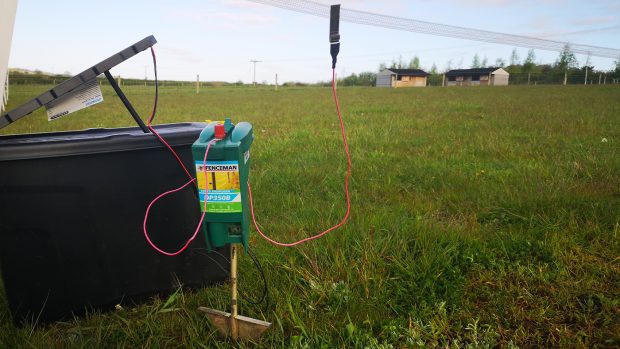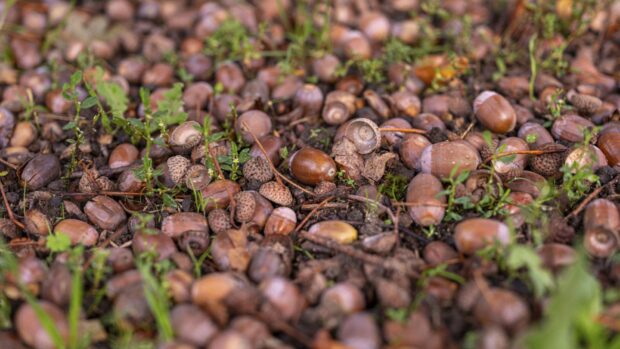Strip grazing involves fencing off a small area (or strip) in your horse’s field and moving it regularly to allow him access to fresh grass. The easiest way to set it up is with temporary electric fencing – how often you move this fencing will depend on the grass growth and how much your horse needs to consume, which will vary throughout the year.
It’s best practice to move the fencing on both sides of the grazing area at the same time, so that the grazing strip remains the same size as it moves across the field. This creates three areas…
- recovering area – the section your horse has just moved on from
- grazing area – the section between the two fences that your horse can graze
- resting area – the area that your horse will move onto next
Why is strip grazing useful?
Strip grazing can help to…
- protect your field – it allows your pasture to rest and recover, which promotes healthy grass growth and overpopulation of weeds caused by overgrazing
- manage your horse’s weight by reducing his intake
- help your horse adjust to a new field by gradually increasing the size of the grazing area
What do you need for strip grazing?
Temporary electric fencing is the best option for strip grazing because you’ll need to move it regularly. It’s lightweight, easy to move and inexpensive in comparison to more permanent options. We’ve rounded up everything you need to set up temporary electric fencing.
How to strip graze
- Set up your fencing, making sure there’s enough space for the number of horses and that they still have access to shelter and water.
- When the grass has been eaten down, move the fence lines by approximately 1m. This will open up part of the resting section to become part of the grazing area, while allowing another part to become part of the recovery section.
- Continue in this way until you reach the end of the field and then either begin again or work your way back across.
- Tend to the recovering and resting areas with harrowing, topping or reseeding as required.
Strip grazing tips
- Ensure the grazing strip is an appropriate size — too little space will put pressure on herd dynamics, while too much space will make it difficult to manage intake effectively
- Move the fencing regularly
- Have some spare posts and tape handy in case of breakages
- Use the growth of the rested area as a guide to how much your horse is eating on a daily basis
- Avoid designing a setup with too many corners – these put strain on your posts and cause them to bend
- Remove droppings regularly
What is a track system?
A track system usually divides a paddock into a grazing and resting area by marking out a grazing ‘track’ around the perimeter to create a loop with the ungrazed area in the centre. It encourages your horse to move more while grazing, which mimics the greater distances covered in the while. It can also help your horse to burn extra calories.
Track systems typically offer less options for rotating the grazing, but you can add a variety of different surfaces, such as sand, to replicate a more wild environment. It’s likely that you’ll need to provide supplementary forage if you opt for a track system as the grazing area will become over-grazed in time.
You may also be interested in…

Track living: the alternative horsey set-up

The 10 commandments of electric fencing

Subscribe to Horse & Hound magazine today – and enjoy unlimited website access all year round
Horse & Hound magazine, out every Thursday, is packed with all the latest news and reports, as well as interviews, specials, nostalgia, vet and training advice. Find how you can enjoy the magazine delivered to your door every week, plus options to upgrade your subscription to access our online service that brings you breaking news and reports as well as other benefits.





